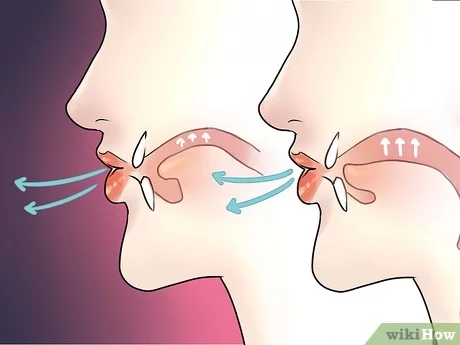How to Whistle
Whistling is a skill that has been practiced for centuries, with people using it for various purposes, such as communication, entertainment, and even as a form of self-expression. While some individuals seem to have a natural talent for whistling, it is a skill that can be learned and improved with practice. In this comprehensive article, we will explore the art of whistling, providing step-by-step instructions and tips to help you master this unique ability.
Key Facts about Whistling
| Fact | Source |
|---|---|
| Whistling is the production of sound by the forcing of breath through a small opening formed by the lips. | Wikipedia |
| The earliest known whistles date back to at least 5,000 years ago and were made from bird bones and other materials. | N/A |
| Whistling has been used in various cultures for communication, such as in the Canary Islands, where a whistled language called Silbo Gomero is still used today. | N/A |
| Whistling can be used to produce a wide range of pitches and melodies, depending on the shape of the lips and the amount of air pressure used. | N/A |
| Whistling has been a popular form of entertainment throughout history, with famous whistlers such as Ronnie Ronalde and Fred Lowery gaining widespread recognition for their skills. | N/A |
The Science of Whistling
Whistling is a complex process that involves the interaction of various parts of the body, including the lips, tongue, and lungs. When you whistle, you force air through a small opening formed by your lips, creating a vibration that produces sound.The pitch of the whistle is determined by the size and shape of the opening between your lips, as well as the amount of air pressure used. A smaller opening and higher air pressure will produce a higher-pitched whistle, while a larger opening and lower air pressure will result in a lower-pitched whistle.The shape of the tongue also plays a role in whistling, as it helps to direct the air flow and create a more focused stream of air. Some people find it helpful to position their tongue slightly behind their teeth when whistling, while others prefer to keep it flat against the bottom of their mouth.
Step-by-Step Guide to Whistling
If you’re new to whistling or looking to improve your skills, follow these steps to get started:
- Relax your lips: Begin by relaxing your lips and letting them hang slightly open. Avoid pursing or tightening them too much.
- Position your tongue: Place the tip of your tongue just behind your bottom teeth, keeping it relaxed and flat.
- Purse your lips: Gently purse your lips into a small, round shape, as if you’re about to kiss someone. Make sure to keep your teeth slightly apart.
- Inhale deeply: Take a deep breath through your nose, filling your lungs with air.
- Exhale slowly: Slowly exhale through your pursed lips, using a steady stream of air. Adjust the shape of your lips and the position of your tongue until you hear a whistling sound.
- Experiment with pitch: Once you’ve mastered the basic whistle, try varying the pitch by changing the shape of your lips and the amount of air pressure used. A smaller opening and higher air pressure will produce a higher-pitched whistle, while a larger opening and lower air pressure will result in a lower-pitched whistle.
- Practice regularly: Whistling is a skill that requires practice. Set aside time each day to practice and experiment with different techniques. The more you practice, the easier and more natural whistling will become.
Tips for Improving Your Whistling Skills
Here are some additional tips to help you improve your whistling skills:
- Stay hydrated: Keeping your mouth and lips moist can make whistling easier and more comfortable. Drink plenty of water throughout the day.
- Warm up your lips: Before practicing, gently massage your lips to warm them up and increase flexibility. You can also try puckering and unpuckering your lips to get them ready for whistling.
- Experiment with different shapes: Try pursing your lips in different ways, such as making a smaller or larger opening, to see how it affects the pitch and quality of your whistle.
- Listen to great whistlers: Listening to skilled whistlers can help you identify the techniques and sounds you want to emulate. Look for videos of famous whistlers or find recordings of whistling in music.
- Be patient and persistent: Whistling is a skill that takes time and practice to master. Don’t get discouraged if you don’t get it right away. Keep practicing, and celebrate your progress along the way.
The Benefits of Whistling
Whistling offers a range of benefits beyond just being a fun and entertaining skill. Here are some of the advantages of whistling:
- Stress relief: The act of whistling can help to reduce stress and promote relaxation by engaging the muscles in the face and neck.
- Improved breathing: Whistling requires deep breathing and controlled exhalation, which can help to improve lung capacity and overall respiratory health.
- Enhanced mood: Whistling has been shown to release endorphins, the body’s natural feel-good chemicals, which can boost mood and improve overall well-being.
- Improved memory: Some studies suggest that whistling can help to improve memory and cognitive function by engaging multiple parts of the brain simultaneously.
- Increased confidence: Mastering a unique skill like whistling can boost self-confidence and help you feel more accomplished and capable.
Conclusion
Whistling is a unique and fascinating skill that has been practiced for centuries. Whether you’re looking to learn how to whistle for the first time or improve your existing skills, this comprehensive guide has provided you with the tools and knowledge you need to succeed.Remember, whistling is a skill that takes time and practice to master. Be patient with yourself, experiment with different techniques, and most importantly, have fun with the process. With dedication and persistence, you’ll be whistling your favorite tunes in no time.
FAQ: How to Whistle
1. What is whistling?
Whistling is the production of sound by forcing breath through a small opening formed by the lips.
2. What are the key steps to learning how to whistle?
The key steps to learning how to whistle are: 1) relax your lips, 2) position your tongue, 3) purse your lips, 4) inhale deeply, 5) exhale slowly, 6) experiment with pitch, and 7) practice regularly.
3. How does the shape of the lips affect the pitch of a whistle?
A smaller opening between the lips and higher air pressure will produce a higher-pitched whistle, while a larger opening and lower air pressure will result in a lower-pitched whistle.
4. What role does the tongue play in whistling?
The shape of the tongue helps to direct the air flow and create a more focused stream of air. Positioning the tongue slightly behind the teeth or keeping it flat against the bottom of the mouth can be helpful.
5. What are some tips for improving whistling skills?
Tips for improving whistling skills include staying hydrated, warming up the lips, experimenting with different lip shapes, listening to skilled whistlers, and being patient and persistent.
6. What are some of the benefits of whistling?
Benefits of whistling include stress relief, improved breathing, enhanced mood, improved memory, and increased confidence.
7. How long does it take to learn how to whistle?
The amount of time it takes to learn how to whistle varies from person to person. With regular practice and dedication, most people can learn the basic skill within a few days or weeks. Mastering more advanced techniques may take longer.



